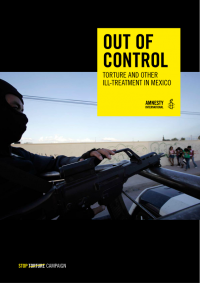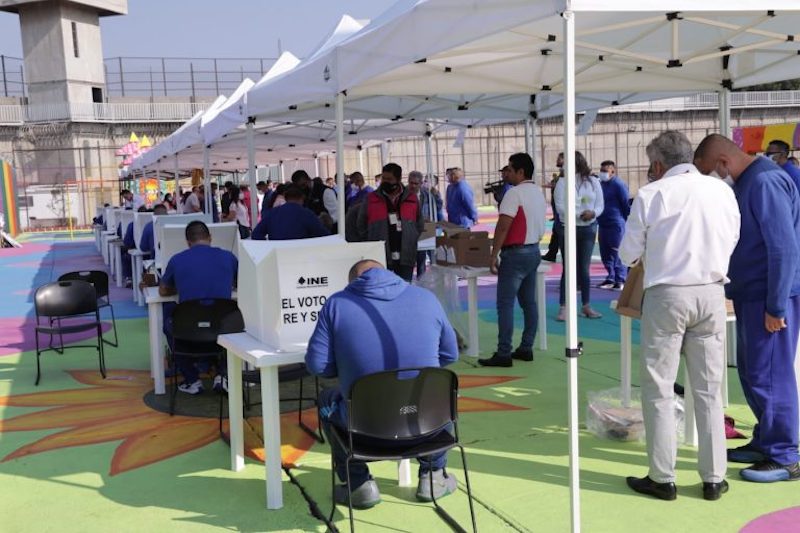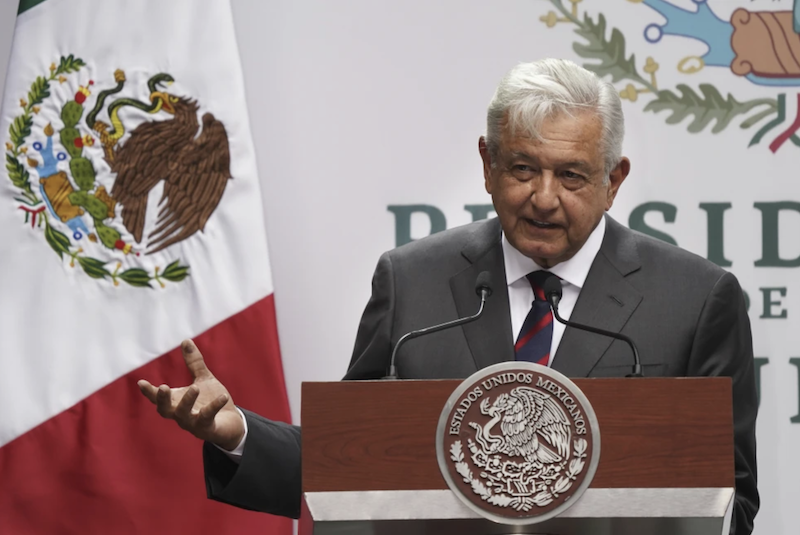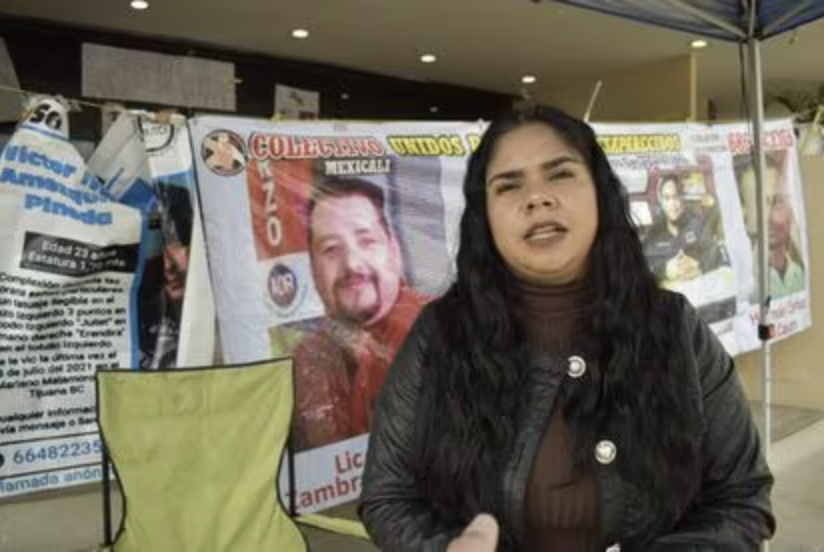
09/30/14 (written by cmolzahn) — Amnesty International (AI) released a report condemning torture perpetrated by Mexican law enforcement personnel, which it classifies as “play[ing] a central role in policing and public security operations by military and police forces across Mexico.” The report, titled “Out of Control: Torture and Other Ill-treatment in Mexico,” is based on several years of research of reports of alleged abuses suffered by individuals both detained and awaiting trial, as well as others following sentencing. The report’s focus, though, is on incidences of torture and other forms of mistreatment occurring initially following detention. Specifically, AI examined documented cases from the Federal District (Distrito Federal, DF) and the states of Baja California, Chihuahua, and the State of Mexico (Estado de México, Edomex). Cases from other states were also included in the study, with the help of local human rights organizations. Aside from interviewing alleged victims, families, lawyers, and human rights organizations, AI also solicited statements from government officials and representatives from state and federal prosecutorial agencies, the judiciary, and state and federal human rights commissions, which AI acknowledged were both cooperative and invaluable to carrying out the study. Aside from an examination of what they term “widespread” use of torture by law enforcement personnel in Mexico and the government’s inadequate response to the problem, the authors also extensively cite individual cases throughout the report, answering their own criticism that the issue has become depersonalized. The report is the first in a series of five country reports to be released as part of AI’s global STOP TORTURE campaign.
In its investigation, AI found that incidents of torture in 2013 were six times the level of 2003, and that a generalized use of torture is met with tolerance by authorities, despite what it characterizes as strong federal law to prevent and punish such mistreatment, partly due to an inability or unwillingness on the part of the justice system to address the problem. The report blames the widespread deployment of the army and navy marines for combating organized crime for being a key factor in the increased use of torture in Mexico. AI found that arbitrary detentions and the fabrication of evidence were also closely associated with acts of torture and other forms of mistreatment. The report also found that medical attention to victims was inadequate, falling well short of international standards, and that the burden of proving that torture occurred often falls on the victim, given the lack of independent, impartial investigations into torture allegations. AI issues a number of recommendations to the Mexican government to address the problem of torture carried out by law enforcement personnel, which include ensuring that detentions are carried out in a legal fashion, ending the role of the Mexican armed forces in policing functions, ensuring detainees’ access to legal counsel, as well as adequate, impartial medical attention, and immediately initiating investigations into suspected acts of torture against detainees. The authors also call on Mexico to align itself with international standards, particularly with regards to the Federal Attorney General Office’s (Procuraduría General de la República, PGR) Special Procedure (“Specialized medical/psychological evaluation”). They also recommend that more be done to exclude evidence obtained through human rights violations, and to establish a judicial mechanism through which to investigate allegations of such methods.
Torture is employed for a variety of reasons, including to force confessions or statements implicating others, to extort money, or simply to humiliate and punish detainees. Methods include beatings, death threats, electric shocks, mock executions, near-asphyxiation including waterboarding, stress positions, sexual violence, and threats against detainees’ families. According to data from the National Human Rights Commission (Comisión Nacional de Derechos Humanos, CNDH), there were 219 reports of torture and other ill treatment made to that agency in 2003, as compared with 1,505 in 2013. While the 2013 total represents a 29% decrease from the peak in 2012, it still reflects a 687% increase from a decade prior. Moreover, between 2010 and 2013 the CNDH received more than 7,000 reports of torture and other forms of ill treatment. Likewise, the CNDH issued one recommendation related to torture in 2003, as compared with 13 in 2013. Additionally, the complaints of torture made to the CNDH far under-represent the scale of the problem, in part because of victims’ reluctance to report violations, and in part due to the CNDH only handling allegations of abuse by federal law enforcement personnel. Data from the state-level human rights commissions (Comisión Estatal de Derechos Humanos, CEDH) show a total of 2,323 complaints of torture between 2008 and 2013. However, the authors report that six CEDHs failed to provide information to AI. These numbers too, though, are an undercount, given what AI terms inconsistent and flawed CEDH procedures and the lack of a national registry for compiling CEDH data.
The report highlights specific groups that have been targeted for arrests that have been particularly prone to resulting in torture. The authors mention the policing of public demonstrations as one of these cases, resulting in excessive force, arbitrary detentions, torture, and other forms of mistreatment. AI also mentions human rights defenders—including lawyers—who find themselves targeted for reprisal by authorities for defending individuals claiming to have been victims of torture by public security agents. The report highlights men from marginalized communities and vulnerable groups like irregular migrants as being the majority of victims in cases documented by AI.

Beyond the numbers of complaints of torture and other mistreatment by law enforcement agents, AI is particularly critical of the impunity surrounding such incidences. Of the over 7,000 complaints the CNDH received between 2010 and 2013, the authors maintain that not one resulted in a conviction on torture charges. Moreover, according to the Federal Judicial Council, of the 123 prosecutions held in federal courts between 2005 and 2013, just seven resulted in convictions. At the state level, there have only ever been five torture convictions, according to the National Statistics and Geography Institute (Instituto Nacional de Estadística y Geografía, INEGI). Moreover, AI cited Mexican government statements to the United Nations Committee Against Torture in 2012 that six verdicts had been handed down for the offense of torture since 2005, adding that there had been 143 trials for abuse of authority, 60 for misuse of public office, and 305 for unauthorized use of public authority, which AI said reflected a “pattern of downgrading crimes of torture to lesser offences that carry lighter sentences or, in some cases, are dealt with as minor disciplinary matters.”
AI recognizes Mexican anti-torture law as being “extensive” on paper, with Mexico having signed on to UN and Inter-American conventions against torture, as well as committing to abide by recommendations from the CNDH. Torture is also prohibited in the Mexican Constitution, with a federal law to prevent and punish torture in place since 1991. Nevertheless, the report denounces a criminal justice system that admits evidence obtained as a result of arbitrary detentions and torture. The report also criticizes “legal” detentions, pointing out that the majority of arrests in Mexico are carried out without a warrant, in which officers detain suspects “en flagancia,” or “red-handed,” or immediately after an alleged crime has occurred. Government data on arrests, however, are inconsistent and inaccessible to the public, according to AI. Moreover, a generally-accepted assumption of guilt along with little to no burden on arresting officers’ part to demonstrate due cause has led to very few arrests being successfully challenged in the courts.
The report points to what it terms as “trial by media” to characterize arrestees from poor or marginalized communities who find it difficult to counter fabricated or unlawful evidence against them because of discrimination at all levels of the judicial system. Suspects are regularly exhibited in the media looking their worst and often before seized drugs and/or weapons, and are condemned by public opinion before even being formally charged. Mexico City has established a protocol limiting the use of such practices, but AI says that they remain “routine” in other jurisdictions in the country. Likewise violating the presumption of innocence, the report criticizes, is the practice of arraigo, a detention mechanism requested by a public prosecutor and granted by a judge that allows for the detention of a suspect for up to 80 days without formal charges, intended to be applied to serious crimes. The authors cite international human rights organizations that have said that arraigo promotes the use of detention as an investigatory tool and have called for eliminating the practice. The report acknowledges some improvements, such as a lesser use of the practice under the Peña Nieto administration and a May 2014 Mexican Supreme Court ruling that limits the use of the practice to the federal government and only in cases involving organized crime, and allowing evidence gathered under arraigo to be challenged in trial to determine its admissibility. Nevertheless, the authors advocate for the removal of the practice altogether.
The report finds that Mexico’s Special Procedure is not in line with the Istanbul Protocol, the UN Manual on the Effective Investigation and Documentation of Torture and Other Cruel, Inhuman or Degrading Treatment of Punishment, although the two have come to be more or less synonymous in Mexico. Of 1,219 initial investigations into allegations of such treatment, only 472 saw the Special Procedures implemented, while only 12 resulted in torture charges being filed. The authors fault the lack independent forensic doctors and psychologists properly trained to carry out the requirements of the Protocol. Moreover, the PGR provides training to state-level forensic scientists. The Special Procedure is also lacking independent oversight, which appears to depend entirely on the PGR’s own committee, consultative group, and advisory panel.
Finally, the AI report faults Mexico with failing to provide restitution and reparations in cases of torture or other ill treatment with the exception of cases in which the Inter-American Court of Human Rights (IACHR) has ruled against the government. The authors criticize both the PGR and the CNDH for their reparations mechanisms, arguing that neither advocates for the payment of reparations through the national courts, in line with international norms. They criticize that NGOs in Mexico have stepped in to provide medical and psychological support to individuals falsely imprisoned as a result of torture or other ill treatment, filling a need that should be met by the federal government. AI points to the creation in 2013 of the National Commission for Victims as potentially valuable in addressing these needs, but stresses that it is “still at an early stage,” and that the “necessary law and financial resources to enable the Commission for Victims to become operational are still not in place.”
Sources:




